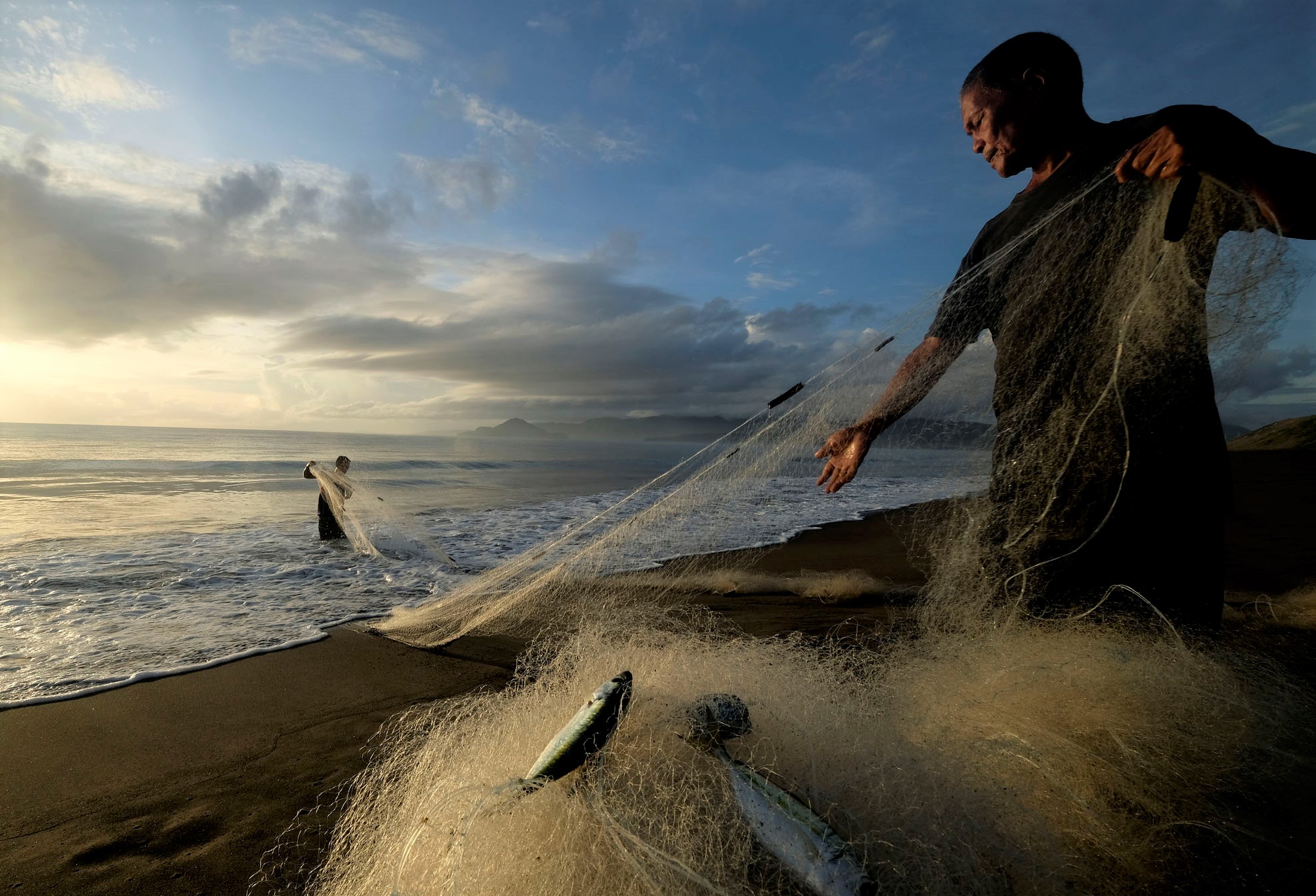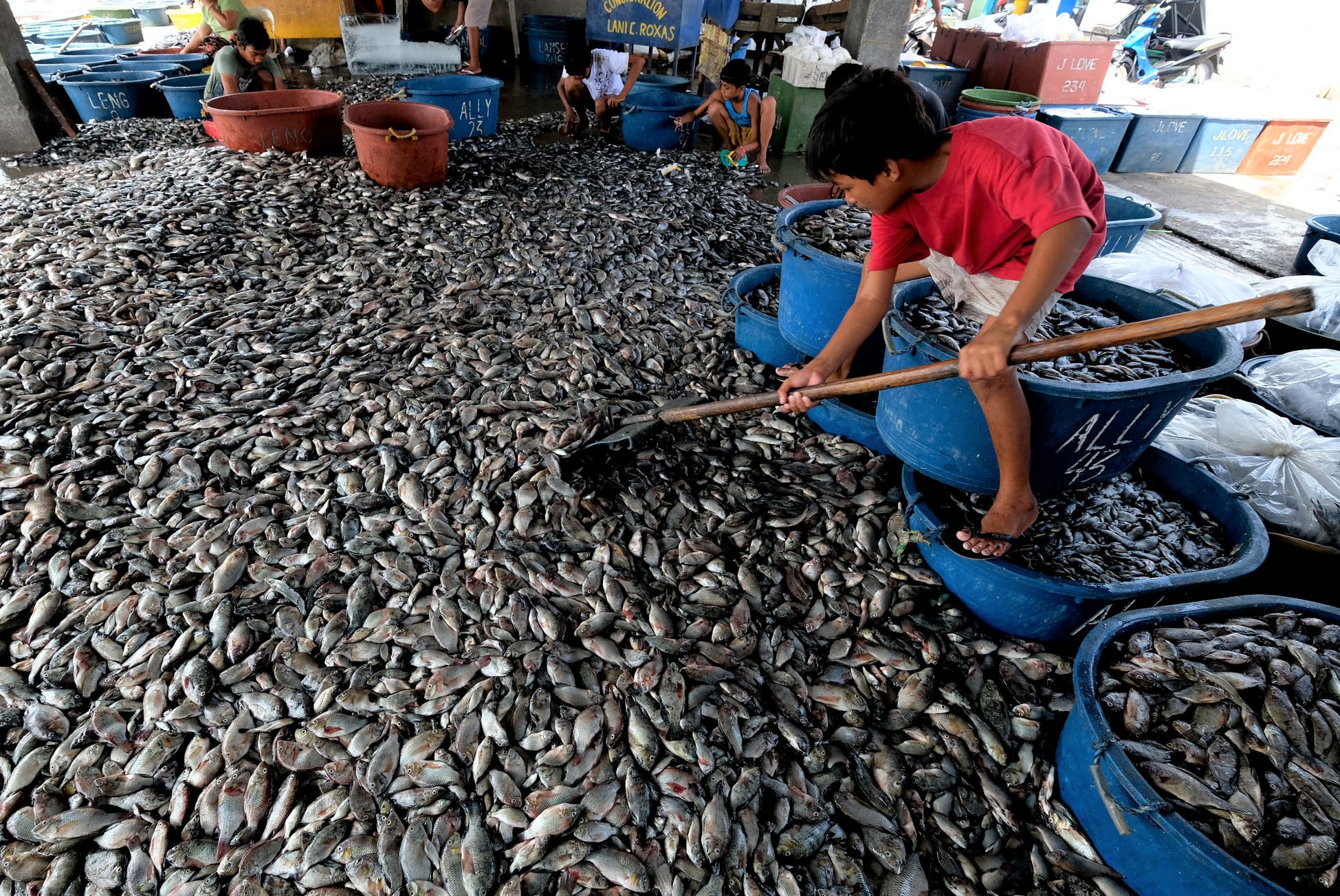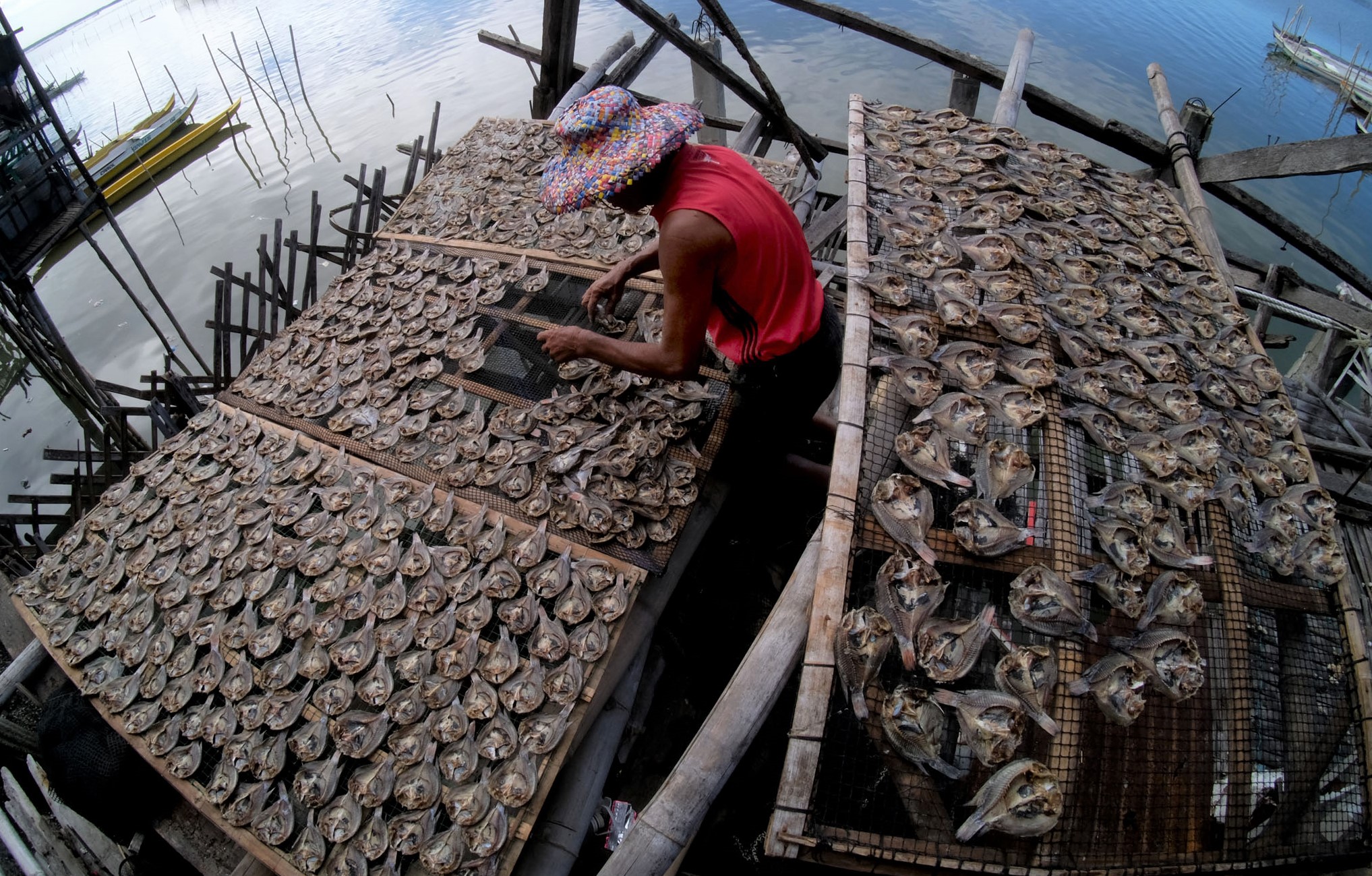Text by Henrylito D. Tacio
Photos by Rhoy T. Cobilla
What’s on your table lately? Pork for breakfast, chicken for lunch, and vegetables for dinner? So, where’s the fish?
“They’re too expensive now,” my sister-in-law, Joan, replied. “Besides, they’re not readily available. What you can buy immediately in the public market are pork, chicken or beef. Vegetables are available at all times.”
Her observation is accurate. If you go to the public market in the afternoon, you barely see fish in the stalls. Most of the fish are already gone; if they’re available, most of the fish are small, and there are no more choices.
Whatever happened? Our country, with some 220 million hectares of territorial waters, ranked 8th among the top fish-producing countries in the world in 2014. But the production is now waning.
“Today, fishermen could hardly have fish to catch,” Dr. Salome Bulayog, an associate professor in the Department of economics at the Visayas State University, told us in an exclusive interview. “Fishermen have to spend longer to catch a kilogram of fish; some even have to go farther from the shore.”
A sad reality, indeed. To think, the average Filipino eats 98 grams of fish per day and 36 kilograms of fish per year, reports the Philippine Statistics Authority (PSA). Fish is the cheapest source of animal protein compared to beef, pork, and chicken in the country.



As of 2021, the Philippines is only 85% self-sufficient in rice, but it is 97% self-sufficient for fish. “The difference in food gaps is made up for by importation from other countries,” said Dr. Rafael D. Guerrero III, an academician with the National Academy of Science and Technology (NAST).
The present administration of Ferdinand Marcos, Jr. is batting for food self-sufficiency by increasing production in the country. But with rising costs for fuel and agricultural inputs such as fertilizers, pesticides, and feed ingredients, how can these be possibly achieved?
In the past, importation seemed to be the answer to the problem. When the production of “galunggong” (round scad) declined from our seas, we imported fish from China, Taiwan, and Vietnam to augment local supply.
All in all, we imported 117,000 metric tons of marine fish in 2018 and 45,000 metric tons in 2019.
As an immediate solution to the problem, the Bureau of Fisheries and Aquatic Resources (BFAR), a line agency of the Department of Agriculture, recommends “closed season” in areas where the fish stocks are overfished.
“Closed season” refers to a fishing ban for three months. In the Davao Gulf, for instance, a fishing ban is implemented from June to August every year. Closed season is done “to conserve marine resources and to secure the spawning period of pelagic fishes.”
But in the long run, “closed season” may not be enough. With our population continuing to grow – about 110 million as of the moment – there is a need for further increasing fish production to cope with the demand.
What we need now is a new kind of revolution that will catch up with the demand for fish. As “The Economist” puts it: “New technologies, new breeds and newly domesticated species of fish offer great hope for the future.”
If we have had a “green revolution” before, then a “blue revolution” is what we need now. For those who have never heard of “green revolution,” here’s what “The Economist” shared: “On land, the green revolution allowed dramatic increases in crop production, with increased mechanization, and improved pest control and soil fertility through addition of herbicides, pesticides and nitrogen-based fertilizers.”
So, if the same technique can be adopted in the waters, “blue revolution” is the possible solution to the problem of dwindling fish production.
The BFAR believed the country can be fish self-sufficient through aquaculture and mariculture. Both are related to raising aquatic products under controlled conditions. Aquaculture and mariculture may have the same objectives, but they are different in the sense that the former is related to growing fish in freshwater, and the latter pertains to seawater.
According to Dr. Guerrero, several mariculture parks – or marine areas similar to industrial parks on land – have been established by the BFAR in many regions of the country in cooperation with local government units.
In Davao Region, the Panabo City Mariculture Park (PCMP) is an example. It was established by the city government of Panabo in 2006 in partnership with the BFAR.
Currently, more than 50,000 hectares of mariculture areas have already been established in the country. The BFAR has identified an additional 200,000 hectares of coastal waters suitable for expansion.
Meanwhile, some fishery experts argued aquaculture should not be considered as the ultimate solution to the problem of fish crisis.
“Aquaculture brings its own ecological challenges: it can spread diseases from farmed to wild fishes, pollute nearby waters with excess nutrients, lead to habitat destruction (such as clearing of mangroves for shrimp farming), and threaten genetic diversity through the release of farmed species into the wild,” wrote Dr. Jeffrey D. Sachs, director of the Earth Institute at Columbia University, in “Scientific America” feature.
Hopefully, fish will be readily available in the future. After all, it is healthier to eat fish than pork, beef, and chicken.

